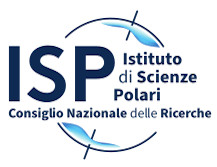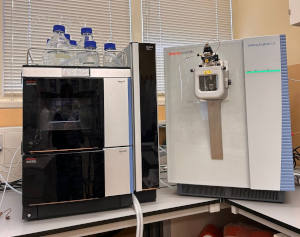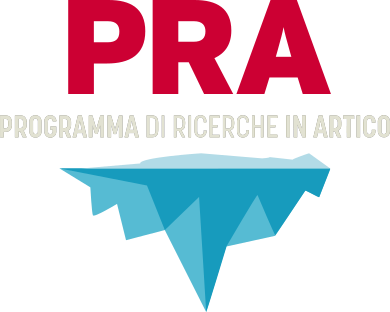Infrastructures
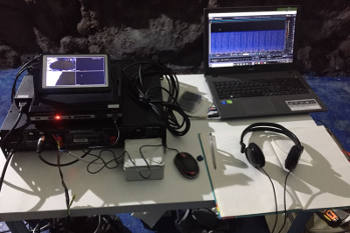 Short description
Short description
The experimental activities carried out at the BioSoundEcology Lab in Messina are focused on the analysis of biological underwater acoustic sources and the study of the ecological dynamics of marine vertebrates and invertebrates in polar habitats. In addition, the impacts of anthropogenic acoustic sources on the ecology, physiology and behaviour of marine organisms are assessed. In particular, through the study of the sounds generated by animals, the biological and ecological aspects are investigated. The analysis of the noise from human activities provides useful elements for understanding the effects on animals through the study of their behavioural and physiological responses.
Matrices of interest
The activities are mostly ascribable to marine habitats.
Study techniques
At the BioSoundEcology Lab, acoustic data acquisition in field/controlled environment and assessment of animal responses to environmental noise disturbance are carried out, in particular:
- Acoustic data analysis;
- Estimation of underwater noise and environmental acoustic components;
- Evaluation of ecological dynamics through the analysis of the vocalizations of marine animals;
-Analysis of the biochemical, physiological and behavioural responses of animals exposed to acoustic disturbance;
- Study of the acoustic ecology of marine mammals.
Instrumentation
The Lab is equipped with instrumentation for passive acoustic monitoring in the field (hydrophones and autonomous acoustic data acquisition systems) and for studies of the effects of noise on marine organisms in controlled environment (cameras, amplifier, acoustic transducer, software for acoustic and behavioral analysis).
For details: Dr. Francesco Filiciotto – francesco.filiciotto AT cnr.it
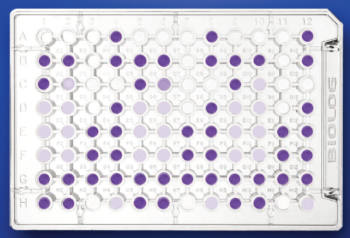
Brief description
The experimental activities carried out at the BioChem Lab in Rome are focused on the study of the effects of legacy and emerging organic micropollutants on organisms belonging to different levels of the trophic web (from microbial communities to higher organisms) in the context of ongoing climate change. The analytical determinations on the biota are aimed at evaluating bioaccumulation and biomagnification processes of target pollutants. Other studies performed at the BioChem Lab focus on:
- The degradation rates (evaluation of the half-life time - DT50 - and determination of metabolites or transformation products of target compounds) of the organic contaminants by setting up laboratory-scale experiments.
- Evaluate the effects of organic micropollutants on specific target organisms (e.g. avoidance behaviour test in Eisenia foetida) and on the structure (PhosphoLipid Fatty Acid analysis-PLFA) and function (Community Level Physiological Profile - CLPP) of autochthonous microbial communities, through the preparation of laboratory-scale experiments and environmental monitoring.
- Investigate the occurrence and diffusion of antibiotic resistance genes (ARGs) and the intI1 gene which is an anthropogenic impact proxy, among natural microbial communities related to the presence of antibiotics in environmental matrices.
Environmental compartments
The bioaccumulation/biomagnification studies of organic micropollutants involve biota such as fish, molluscs, terrestrial and aquatic earthworms and terrestrial and aquatic plant species. The studies on persistence and effects of pollutants on natural microbial communities are related to different environmental compartments such as surface waters and sediments (seas, rivers, lakes), snow/ice and soils.
Analytical techniques
Studies on bioaccumulation/biomagnification/persistence of organic contaminants are performed by a combination of:
- Pre-treatment methods (e.g. freeze-drying, filtration, etc.).
- Extraction/Clean-up methods (solid-phase extraction-SPE, pressurized liquid extraction-PLE, liquid-liquid extraction-LL).
- Sensitive and selective analytical methods based on the coupling of chromatographic techniques (HPLC or GC) and fluorescence, FID-ECD, and mass spectrometric (MS) detection.
- The avoidance behaviour test is based on the exposure of organisms, specifically earthworms belonging to the Eisenia foetida species, to different sub-lethal concentrations of organic contaminants, to evaluate their escape/avoidance behaviour in the contaminated area.
- The evaluation of the composition of natural microbial communities is carried out by PLFA (PhosphoLipid Fatty Acid) profiling. This biochemical technique includes the extraction of fatty acids from microbial membrane phospholipids in the environmental matrix and a methylation reaction followed by separation and analysis with gas chromatography.
- The analysis of microbial diversity at a functional level is performed by the determination of the metabolic/physiological profile (CLPP). This physiological assay involves the incubation of the environmental sample in specific plates and spectrophotometric measurements at fixed times.
- The analysis of ARGs and intI1 gene is performed by DNA extraction from the environmental samples by using specific kits and subsequent analysis by qPCR.
Equipment
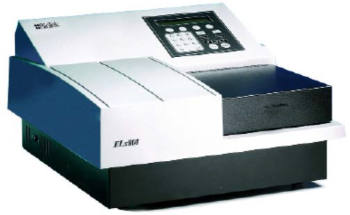 The BioChem Lab is equipped with the following analytical tools:
The BioChem Lab is equipped with the following analytical tools:
Benchtop lyophilizer (freeze-dryer LABCONCO) 2.5 L capacity, equipped with a touchscreen display, for the pre-treatment of solid matrices subsequently extracted with PLE.
Solid Phase Extraction (SPE):12 inlets of the solid phase extractor are connected to cartridges packed with specific adsorbents for the extraction of target compounds from liquid matrices through a vacuum system.
Syncore® Analyst (Buchi) for the simultaneous pre-concentration of liquid phase samples.
Rotavapor R 100 (Buchi), equipped with an electronic interface to control the vacuum system and the recirculating chiller.
Gas Chromatograph (Perkin Elmer, Clarus 480) coupled to a FID-ECD detector (Flame Ionization Detector- Electron Capture Detector). The instrument is connected to an autosampler (Autosystem, Perkin Elmer) and is controlled by TotalChrom Software.
Gas chromatograph (Thermo Fisher, Trace 3000) coupled to a mass spectrometry (MS) detector (Thermo Fisher, ISQ7000). The device is connected to an autosampler (Thermo Fisher. AI 1310) and is controlled by a Chromeleon software.
HPLC (quaternary pump, column Oven mod. LC-100 and Micro Pump Series 200, Perkin Elmer, USA) coupled to a fluorescence detector (Perkin Elmer Series 200a). The device is controlled by Chromeleon Software.
HPLC (binary pump, Vanquish TM Core HPLC system, Thermo Scientific TM, Italy) coupled to a high-resolution mass spectrometer (Orbitrap Exploris 120, Thermo Scientific TM, Italy). The device is controlled by XcaliburSoftware (version 5.1).
Spectrophotometer (Biolog Microstation System, Biolog Inc.) for the reading of microplates (96 positions). This instrument is controlled by specific software.
Contact person: Dr. Luisa Patrolecco – luisa.patrolecco AT cnr.it
The BSRN was created to improve the quality of measurements of the Earth-atmosphere radiative fluxes that determine the thermal conditions and circulation of the atmosphere and the ocean. The ISP manages this observatory at the Italian-French Concordia station in Antarctica. Installed in 2006, the BSRN was funded by the PNRA and consists of a series of passive instruments (radiometers and photometers) that measure different components of the radiation balance (both in the solar and infrared spectrum), including the surface albedo.
In addition to these measurements, during the austral summer, the columnar content of aerosols is also measured by means of an SP02sun photometer, and the ultraviolet radiation spectrum by a UV-RAD radiometer, from which it is possible to obtain the ozone concentration, along the entire atmospheric column. Other measurements that are carried out as part of the observatory's activities are in collaboration with the Finnish Meteorological Institute (FMI) and concern the physical and optical properties of atmospheric particulate matter at ground level: its diffusion, absorption coefficients and dimensional distribution.
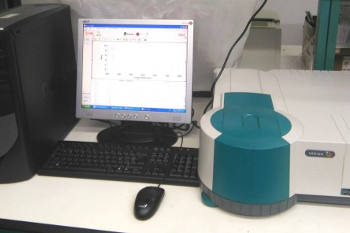 Brief description
Brief description
The research activities carried out in the HydroChem laboratory in Messina are aimed at studying the marine (coastal and pelagic) and lake water bodies, providing technical-scientific support to the study of biogeochemical cycles and ecological processes also in relation to marine acidification, as well as studies of microbial biomass conducted in the MAMB Laboratory. In particular, analyses of oxygen, salinity, pH, nutrients (nitrogen and phosphorus) and particulate organic carbon are performed. As part of the environmental monitoring activity, several prototype nutrient analyzers were tested both on fixed platform and on boat, at pristine or anthropogenically polluted sites.
Matrices of interest
The analyzed matrices are mostly attributable to the hydrosphere (marine, river and lake waters, brines).
Instrumentation
The laboratory is equipped with basic instrumentation for environmental chemistry [spectrophotometer, spectrofluorimeter, luminometer, digital burette for oxygen titration, centrifuge, salinometer, automatic nutrient analyzers (ammonia, nitrites, nitrates and orthophosphates), extraction hoods, vacuum pumps, filtration septa, magnetic shaker, pHmeter].
For details: Dr. Filippo Azzaro – filippo.azzaro AT cnr.it
The Amundsen-Nobile Climate Change Tower (CCT) is a scientific platform dedicated to studying the thermodynamic characteristics of the atmospheric boundary layer and the exchange processes between the surface and the lower layers of the atmosphere. The structure is composed of 17 modules equipped with patch boxes to provide a power supply and data connection that ends in a dedicated hut at 40 m from the tower, where the acquisition systems are located. The CCT provides continuous profiles of meteorological parameters at four levels up to 34 m, measurements of turbulent fluxes of momentum heat and moisture at two levels as well as of radiation balance components (visible and infrared). Measurement of the characteristics of the snow layer (depth and temperature) are also provided in conjunction with the atmospheric parameters.
Due to the uniqueness of such an infrastructure in Ny-Ålesund, since 2012, the CCT and the surrounding area have become a point of reference for the integrated observation of the components of the climate system. Offering access to national and international research groups, new scientific installations have been set up. In particular for the measurement of greenhouse gases (in collaboration with KOPRI); for the measurement of the snow cover index and spectral reflectivity of the snow; for remote sensing of wind profiles with SODAR and WindLIDAR (in collaboration with KOPRI); to study processes in the active layer, the vegetation, the snow cover and the permafrost temperature profiles.
Concordia Station (75°06’ S, 123°21’ E) is located on the Antarctic plateau at Dome C, which is 3,233 m above sea level and over 1000 km from the coast.
Construction of the station, supported by an intergovernmental agreement between Italy and France and the result of the collaboration between the PNRA and the French Polar Institute Paul Émile Victor (IPEV), was completed in 2005. Since then, Concordia is a permanent station jointly managed by PNRA and IPEV as part of their respective polar programs. For more information, visit the website www.pnra.aq.
Dirigibile Italia is one of the multidisciplinary research stations managed by the CNR, providing support to numerous national and international research projects. The station, inaugurated in 1997, is located in the village of Ny-Ålesund (78°55' N, 11°56' E), on Spitsbergen Island, in the Svalbard archipelago. It is from there that the polar expedition of the General Umberto Nobile set off in 1928, and the station is named in its honour. The Department of Earth System Sciences and Technologies for the Environment (DSSTTA) of the CNR managed the station in the past, but is has now been assigned to the Institute of Polar Sciences (July 2020).
The station participates in the INTERACT and SIOS access programs, making its spaces and means available to countries that do not have access to the Arctic so they can carry out research projects.
It is also included in the Forum of Arctic Operators FARO, a country membership organization that promotes dialogue on logistics and operational support for scientific research in the Arctic.
Dirigibile Italia is a 323 m2 structure, 170 of which are used as laboratories and offices; it can accommodate up to 7 people.
The base is open throughout the year to provide support to research activities.
Among the services that the base provides are:
• 6 beds for staff;
• a chemistry laboratory equipped with a laminar flow hood and an extraction hood, a precision balance, ultrapure water dispenser, freezer and more;
• other workspaces;
• an equipped electronics and mechanics laboratory;
• an internal warehouse space for storing material;
• 3 snowmobiles for winter and spring shifts, equipped with trolleys for transporting material, as well as the necessary suits, boots and helmets;
• 3 fat-bikes with trolley for summer shifts;
• 5 VHF radios for communication between people in the field and for their safety.
- Contact: stationleader.arctic AT cnr.it
- Station Welcome page
- Facebook page of the Research Station
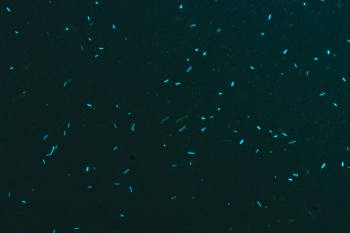 Brief description
Brief description
The experimental activities carried out at the MAMB laboratory in Messina are aimed at the ecological study of microorganisms by applying specific methods for the determination of the abundance and biomass of prokaryotes (Bacteria and Archaea) and phytoplankton, as well as for the morphometric and morphological description at the cellular level. The evaluation of these phenotypic characteristics provides a different approach to the analysis of the ecosystem structure and allows to evaluate the heterogeneity of natural populations. Variations in cell size, shape and morphology are considered sensitive indicators of trophic and climatic changes in ecosystems. The laboratory also carries out analyzes for the quantification of viable (Live / Dead) and respiring (CTC +) cells using specific microbial biomarkers. The laboratory activities are also in support of the EcoBiM and BiogeM Laboratories.
Matrices of interest
The matrices analyzed are mostly attributable to the hydrosphere (marine, river and lake waters, brines), soil, sediments, biofilm, cryosphere (permafrost, snow, sea and continental ice, intrapermafrost brines) and aquatic organisms.
Applied experimental approaches
- determination of biomass of prokaryotes by counting, and morphometric and morphological analysis of cells, using selective filters for DAPI (4 ', 6-diamidine-2-phenylindole);
- determination of cells with primary fluorescence using specific selective filters;
- quantification of cells endowed with respiratory activity (5-Cyano-2,3-ditolyl-tetrazolium chloride-CTC), using selective filters for rhodamine;
- quantification of viable cells with intact membranes (Live / Dead) using selective filters for fluorescein and rhodamine;
- identification of target bacterial cells by immunofluorescence techniques (fluoresceinated antibodies);
- estimation of the relative abundance of microbial phylogenetic groups using CARD-FISH (catalyzed reporter deposition-fluorescence in situ hybridization).
Instrumentation
- Zeiss AXIOPLAN 2 Imaging epifluorescence microscope equipped with AXIOCAMHR (Zeiss) digital video camera and AXIOVISION 3.1 software. Technical features: high pressure mercury vapor lamp (100 W); 100XPlan-Neofluar immersion objective; 10 X eyepieces, one of which has a squared reticle; interchangeable and appropriate optical filter sets for:
DAPI: G365 excitation, FT395 color divider and LP420 barrier filter;
Primary fluorescence: BP450-490 / FT510 / LP515;
Rhodamine: BP546 / 12; FT580; LP590;
Fluorescein: BP450-490; FT510; LP520.
For details: Sig. Giovanna Maimone – giovanna.maimone AT cnr.it
The Gruvebadet atmospheric laboratory is located about one kilometre south of Ny-Ålesund and is dedicated to the study of the atmospheric composition and more particularly that of the aerosol. The laboratory was opened in 2010 by the CNR in the building that once housed the Ny-Ålesund miners' showers (Gruve = mine, badet = bathroom in Norwegian).
The laboratory is equipped to house a large number of instruments dedicated to the study of aerosol. There is an accessible roof for the installation of both sampling heads and actual samplers, as well as a series of "passages" for the sampling tubes between the interior of the laboratory and the roof.
The laboratory is managed by the CNR in collaboration with numerous Italian universities: Florence, Perugia, Venice, Turin etc.
The main measurements made in the laboratory are:
- the chemical characterization (organic component and metals) of size segregated atmospheric particulate ;
- measurement of the size distribution of aerosols and their diffusion and radiation absorption properties ;
- the measurement of the carbon component of particulate matter (EC / OC);
- study of new particle formation processes and their ability to form clouds.
In recent years, atmospheric activities have been accompanied by studies of the surface snowpack. The interaction between the atmosphere and snow is one of the topics that most needs to be explored as, for example, the deposition of particulate matter on the snow can accelerate its melting.
The laboratory has attracted more and more interest from foreign researchers; to date, there are numerous active international collaborations on these topics with KOPRI, NPI, the University of Helsinki etc and others.
Gruvebadet - Aerosol laboratory on the website: artico.cnr.it
Research activities are not only based on the observatories, there is a network of laboratories, located at the various branches of the Institute, which allow researchers to develop ISP research topics. In the laboratories, samples taken in polar areas are analysed. These samples, given the difficult environmental conditions in which we operate during the field campaigns, as well as the considerable logistical effort involved in their collection, are always precious and often unrepeatable. Therefore, the availability of equipment that allows the researcher to obtain the maximum possible information from each sample becomes fundamental so we can advance knowledge of these extreme environments.
The laboratories also perform services on behalf of third parties and in the context of contracts, agreements and research collaborations with companies, universities and national and international institutions. For more information, contact the representatives of the laboratories / instruments.
More...
Brief description
The experimental activities carried out at the MicroChem Lab in Rome focus on the analytical determination of legacy and emerging organic micropollutants and their metabolites, in order to understand their diffusion, distribution, persistence dynamics and fate in the environment. The studies performed at the MicroChem Lab aim also to study the relationships between the climate change and the spread of contaminants at global and local scale. For these purposes, the development and optimization of highly specific and sensitive analytical methodologies for the detection of chemicals at trace and sub-trace concentration levels in the environmental matrices, is required.
Environmental compartments
The experimental activities focus on aquatic and terrestrial ecosystems, therefore the environmental matrices of interest are: Surface waters and sediments (seas, rivers, lakes), snow/ice, soils, aquatic and terrestrial vegetation, biota.
Analytical techniques
The analytical determination of the organic micropollutants is performed by the combination of:
- Pre-treatment methods (e.g. freeze-drying, filtration, etc.);
- Extraction/Clean up methods (solid-phase extraction-SPE, pressurized liquid extraction-PLE, liquid-liquid extraction-LL);
- Sensitive and selective analytical methods based on the coupling of chromatographic techniques (HPLC or GC) with fluorescence, FID-ECD and mass spectrometry detection.
Equipment
The MicroChem Lab is equipped with the following analytical tools:
Benchtop lyophilizer (freeze-dryer LABCONCO) 2.5 L capacity, equipped with a touchscreen display, for the pre-treatment of solid matrices subsequently extracted with PLE.
Solid Phase Extraction (SPE): 12 inlets solid phase extractor connected to cartridges packed with specific adsorbents for the extraction of target compounds from liquid matrices through a vacuum system.
Sonicator (Branson, mod. 2510) for the extraction of chemical compounds from solid matrices by using suitable solvents.
ASE 150 (Dionex, Thermo Scientific) to perform pressurized liquid extraction (PLE) of organic pollutants from solid matrices.
Speed Extractor E-916 (Buchi) to perform simultaneous pressurized liquid extraction (PLE) of 6 samples, operating in different modes.
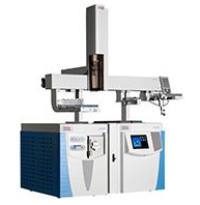 Rotavapor R 100 (Buchi), equipped with an electronic interface to control the vacuum system and the recirculating chiller.
Rotavapor R 100 (Buchi), equipped with an electronic interface to control the vacuum system and the recirculating chiller.
Gas chromatograph (Thermo Fisher, Trace 3000) coupled to mass spectrometry (MS) detector (Thermo Fisher, ISQ7000). The device is connected to an autosampler (Thermo Fisher. AI 1310) and is controlled by a Chromeleon software.
HPLC (quaternary pump, column Oven mod. LC-100 and Micro Pump Series 200, Perkin Elmer, USA) coupled to a fluorescence detector (Perkin Elmer Series 200a). The device is controlled by a Chromeleon Software.
HPLC (binary pump, Vanquish TM Core HPLC system, Thermo Scientific TM, Italy) coupled to a high-resolution mass spectrometer (Orbitrap Exploris 120, Thermo Scientific TM, Italy). The device is controlled by XcaliburSoftware (version 5.1).
Contact person: Dr.Luisa Patrolecco – luisa.patrolecco AT cnr.it
Mario Zucchelli Station (MZS) is located at 74° 41′ S, 164° 6′ E, sitting on a granite promontory in Terra Nova Bay (Ross Sea - Antarctica) at 15 m above sea level.
The station was named in memory of Eng. Mario Zucchelli who coordinated the ENEA Unit for Antarctica (ENEA-UTA) for sixteen years. MZS has been operating since 1985 during the austral summer and supports all the research activities planned by the National Research Program in Antarctica (PNRA).
For more information refer to the www.pnra.aq website.
Mass Spectroscopy Laboratory (SpeM)
Brief description
In the SpeM laboratory, at the Venice headquarters, the researchers carry out the chemical (trace elements) and isotopic (δD, δ13C, δ15N, δ18O) characterization of natural matrices and the determination of the total carbon and nitrogen content (in soils and sediments).
Trace elements are all those elements in the periodic table present in natural matrices with concentrations of less than 1 ppm (parts per million). The quantification of these elements allows, in addition to the chemical characterization of the samples examined, an evaluation of any contamination problems, including those arising from human activities. This allows us to study the exchanges that may take place between different compartments of the different ecosystems, and the origin of the elements, as well as allowing us to reconstruct temporal variations related to current and past climate changes.
Per Isotopes are atoms belonging to the same chemical element, therefore with the same atomic number but which differ by mass number (that is, they differ by the number of neutrons contained within the nucleus). Isotopes are therefore chemically equal but different from a physical point of view. They differ in nuclear stability and instability meaning that some can be radioactive. Among the most studied stable isotopes are oxygen, carbon, hydrogen and nitrogen. The study of stable isotope relative abundances between the various isotopes of an element, gives a measure of the ratio of one of the heavier isotopes to the lighter isotope (the most abundant in nature) of a given element. This ratio in nature is not constant but may vary as a result of chemical, physical and biological processes that can lead to an impoverishment or an enrichment of one isotope compared to the other in the various phases of a natural system: we speak of this as isotopic fractionation. Stable isotopes have fundamental applications for environmental and paleoenvironmental studies. For example, the measurement of δ18O in snow/ice cores allows a reconstruction of the temperature trends in the past.
Instrument
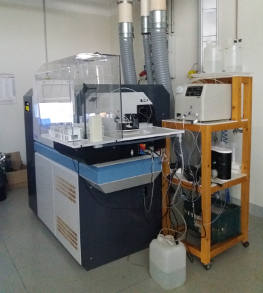
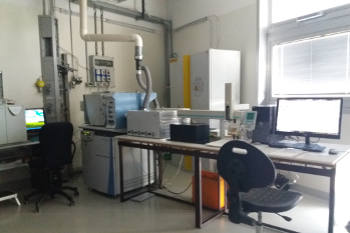
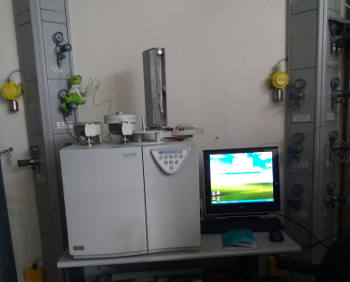
Element XR DeltaV Advantage Elemental Analyzer Flash2000HT
ICP-SFMS Element XR Thermo Scientific equipped with various sample introduction systems (Scott-type spray-chamber in PFA; cyclonic spray-chamber in glass or PFA, cooled by a Peltier system; APEX-ESI system equipped with heated cyclonic spray-chamber (both in glass and in PFA) and a cooling system for the reduction of interferences from oxides and doubly charged ions, resistant to hydrofluoric acid; ARIDUS-CETAC system equipped with heated spray-chamber in PFA and a heated membrane, for the reduction of oxides and doubly charged ions). The instrument is also equipped with an auto-sampler protected by a laminar flow hood that keeps the samples clean during the analysis sessions.
Contact person: Dr. Giulio Cozzi - giulio.cozzi AT cnr.it - CNR-ISP Venice headquarters
IRMS DeltaV Advantage Thermo Scientificequipped with: Gas-Bench (with autosampler), Elemental Analyzer Flash HT with double furnace, two autosamplers for solid samples and one autosampler for liquid samples and ConFloIV, and Gas chromatograph (GC Trace with auto-sampler).
Contact person: Dr. Clara Turetta - clara.turetta AT cnr.it - CNR-ISP Venice headquarters
EA Elemental Analyzer Flash2000HT Thermo Scientific with double furnace, two autosamplers for solid samples and one autosampler for liquid samples.
Contact person: Dr. Clara Turetta - clara.turetta AT cnr.it - CNR-ISP Venice headquarters
Matrix and type of measurement
ICP-SFMS: snow/ice, sea water, surface and groundwater, interstitial water. Determination of trace elements (at ppb to ppq level).
IRMS - Gas-Bench: water (snow/ice, sea water, surface and groundwater, interstitial water), carbonates (foraminifera, carbonates s.s.). δD, δ13C, δ18O measurements,
IRMS - EA: soils, sediments, biota. δ13C, δ15N measurements.
EA: soils, sediments, biota. Determination of total nitrogen (TN), total carbon (TC) and organic carbon (OC).
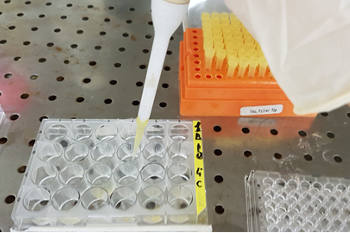 Short description
Short description
The research activities carried out in the BiogeM laboratory at the Messina headquarters are aimed at studying the marine and terrestrial biological processes that modulate and influence the chemical characteristics of the polar environment and the related cycles of matter and energy, also in relation to climate change.
Particular attention is paid to the evaluation of the role of microorganisms in the global carbon cycle and in the biogeochemical cycles of nutrients (nitrogen, phosphorus) of marine and lacustrine environments, through the study of both productive and degradative processes.
Among these, the activities involved in the decomposition of organic polymers, through microbial enzymatic activities, and the mineralization processes through microbial respiration.
The biogeochemical processes mediated by the microbial component are also being studied in the framework of the cryosphere, in order to understand the ecological significance of microbes in the permafrost, and their ability to maintain an active metabolism in extreme living conditions.
Together with the microbial processes linked to the biological pump and organic matter decomposition, a series of indirect biogeochemical parameters related to phytoplankton and bacterial biomass (Chlorophyll, ATP, lipopolysaccharides-LPS) are also determined.
Matrices of interest
The analyzed matrices are mostly ascribable to the hydrosphere (marine, river and lake waters, brines), soil, sediments, biofilm, cryosphere (permafrost, snow, sea and continental ice, intrapermafrost brines) and aquatic organisms.
Study techniques
At the BiogeM laboratory, measurements are carried out to determine the following parameters:
- Primary phytoplankton production;
- Microbial respiratory activity (consumed O2; produced CO2) (by ETS assay);
- Microbial enzymatic activities (leucin aminopeptidase, beta-glucosidase and alkaline phosphatase) (through fluorogenic substrates);
- Heterotrophic bacterial production;
- Content of total and size-fractionated (pico-, nano- and micro-phytoplanktonic) chlorophyll-a, pheopigments;
- microbial ATP in pico-, nano and microplankton fractions;
- Quantitative analysis of lipopolysaccharides (LPS) by the LAL chromogenic test.
Instrumentation
Spectrofluorimeter, Luminometer, Fluorometer, Spectrophotometer equipped with 96-well plate fluorescence reader, incubator, autoclave, balance, homogenizer, filtration systems, refrigerated centrifuge.
For information: Dr. Gabriella Caruso – gabriella.caruso AT cnr.it
 Ministero dell'Universita e Ricerca
Ministero dell'Universita e Ricerca
Programma Ricerche Artico
Programma Nazionale di Ricerca in Antartide
 Ministero degli Affari Esteri e della Cooperazione Internazionale
Ministero degli Affari Esteri e della Cooperazione Internazionale
L'Italia e l’Artico
L’Italia e l’Antartide
CNR-ISP
National Research Council
Institute of Polar Sciences
c/o Scientific Campus - Ca' Foscari University Venice - Via Torino, 155 - 30172 VENEZIA MESTRE (VE)
Phone: +39 041 2348547 - E-mail: protocollo.isp AT pec.cnr.it
Fax: +39 041 2348 549 - Codice Fiscale: 80054330586 - P.I.:02118311006
Unless otherwise indicated, the content of this site is licensed : Attribution Non Commercial Share Alike 4.0 International (CC BY-NC-SA 4.0)
Privacy policy e Cookie policy - Transparent administration (CNR)
